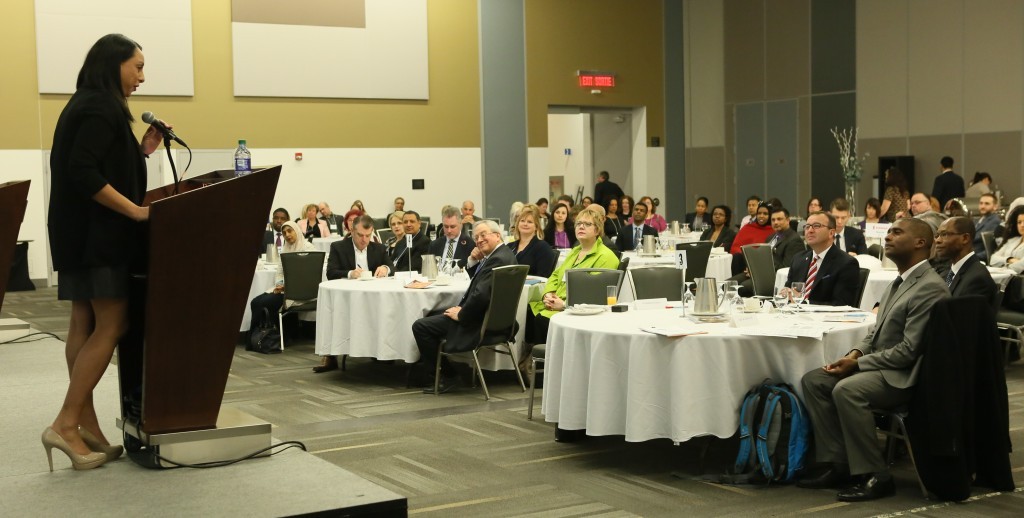
Diversity means having a workplace that reflects both visible differences (gender, skin colour, language, disabilities) as well as invisible differences (sexual orientation, mental health, new hires, long-term employees, introverts, extroverts). Inclusion refers to what employers do to get the most out of their diverse workforce and help employees fulfill their potential.
Why does diversity matter?
Studies show having a diverse workforce can improve an organization’s financial performance, market reputation, employee productivity and group performance.
How well does corporate Canada reflect the diversity of this country?
A snapshot of Canada’s top companies show women make up 47 per cent of workforce, but less than six per cent of all CEOs. Meanwhile, visible minorities make up 30% of Canada’s total population, but fewer than three per cent of corporate directors.
If diverse workplaces make good business sense, why do the leadership ranks lack diversity?
The barriers are the result of unconscious bias at a systemic level, research conducted by Catalyst shows. Women, for example, don’t advance at an equal pace to men. Women fresh out of business school with their MBAs make $4,600 less than men. And that gap grows to more than $8,000 within a few years. Despite the best attempts of employers to be open-minded and fair, hidden bias still shapes everyday interactions at all levels of the workplace.
Bias is pervasive because our brains are hardwired to process vast amounts of information by quickly categorizing, labeling and making snap judgments. In fact, minority groups are just as susceptible to the same implicit biases as majority groups, according to Harvard University researchers.
 Biases can cascade throughout an organization. It starts with a talent-management system that’s shaped by senior leaders. People who fit the preferences of senior leaders are more likely to advance. For example, one common stereotype is to associate strong leaders with predominantly male traits, such as decisiveness and aggressiveness – the so-called “think leader, think male” image. This stereotype often works against women. The same traits that are desirable in strong male leaders – aggression, assertiveness – are not considered desirable in women. However, women who don’t have those qualities are seen as weak, creating a no-win situation for them.
Biases can cascade throughout an organization. It starts with a talent-management system that’s shaped by senior leaders. People who fit the preferences of senior leaders are more likely to advance. For example, one common stereotype is to associate strong leaders with predominantly male traits, such as decisiveness and aggressiveness – the so-called “think leader, think male” image. This stereotype often works against women. The same traits that are desirable in strong male leaders – aggression, assertiveness – are not considered desirable in women. However, women who don’t have those qualities are seen as weak, creating a no-win situation for them.
How do these hidden biases impact an organization?
Individuals who do not fit the organizational preferences for leadership roles typically occupy lower-rank positions. They also have mentors or sponsors that are at a lower rank. And because they are not given the most challenging or important projects, these individuals start to downsize their career ambitions over time.
In workplaces where hidden biases are systemic, individuals tend to cope by “covering,” or downplaying the part of their identity that is stigmatized. An individual from the LGBT community, for example, might not openly discuss details of their family lives with their colleagues for fear of not being accepted. The practice of “covering” isn’t simply confined to minority groups. Even straight, white men “cover” to avoid bias based on social pressure. They may experience status anxiety, for example, over where their children go to school, or what their spouses do for a living.
How can employers create an inclusive workplace?
Based on an analysis by Catalyst of employers in six countries, an inclusive workplace is the result of a balance between two dynamics:
• Recognition of an employee’s unique qualities or competencies that not everyone around them has.
• A sense of belonging that makes employees feel they are part of something bigger than themselves.
How to combat unconscious bias as an Individual and as a Leader in Your Organization.
Individuals who feel a greater sense of inclusion tend to be more productive, innovative and committed to a company.
